The Ha Giang Loop, with its winding mountain roads and breathtaking landscapes, offers one of Vietnam’s most spectacular travel experiences. However, navigating this remote northern circuit demands preparation and caution. While the Instagram-worthy vistas of limestone karsts and terraced fields draw thousands of adventurers yearly, the challenging terrain, unpredictable weather, and isolated routes present genuine safety concerns. At Phieu Travel, we understand that a truly memorable journey begins with safe practices. This comprehensive guide provides essential Ha Giang Loop safety tips to ensure your adventure combines thrilling experiences with peace of mind.
1. Understanding the Ha Giang Loop’s Risks
The Ha Giang Loop’s unparalleled beauty comes with inherent hazards that every traveler should acknowledge before setting out. From natural challenges to man-made obstacles, understanding what you’ll face is the first step toward a secure journey.
1.1 Common Hazards on the Ha Giang Loop
The most immediate dangers stem from the region’s rugged topography. Narrow roads – often just wide enough for two vehicles to pass – cling to mountainsides with sheer drops and no guardrails. Loose gravel, potholes, and uneven surfaces demand constant attention, especially after rainfall when mudslides become common. Weather conditions change rapidly in these mountains, with morning fog reducing visibility to mere meters and afternoon downpours transforming dry paths into slippery hazards.
Traffic presents another significant risk, though not in the form of congestion. Local drivers, experienced with the terrain, often take blind corners at surprising speeds. Large trucks and buses navigate narrow passages with minimal clearance, sometimes forcing motorcycles dangerously close to edges. Additionally, livestock frequently wanders onto roads without warning, creating sudden obstacles that require quick reflexes to avoid.
The remote nature of the loop compounds these risks. Cell service remains spotty throughout much of the circuit, with many areas having no coverage whatsoever. Medical facilities are limited to basic clinics in larger towns like Dong Van and Meo Vac, while comprehensive hospitals exist only in Ha Giang City. These factors mean that even minor accidents can become serious situations if they occur in isolated stretches.
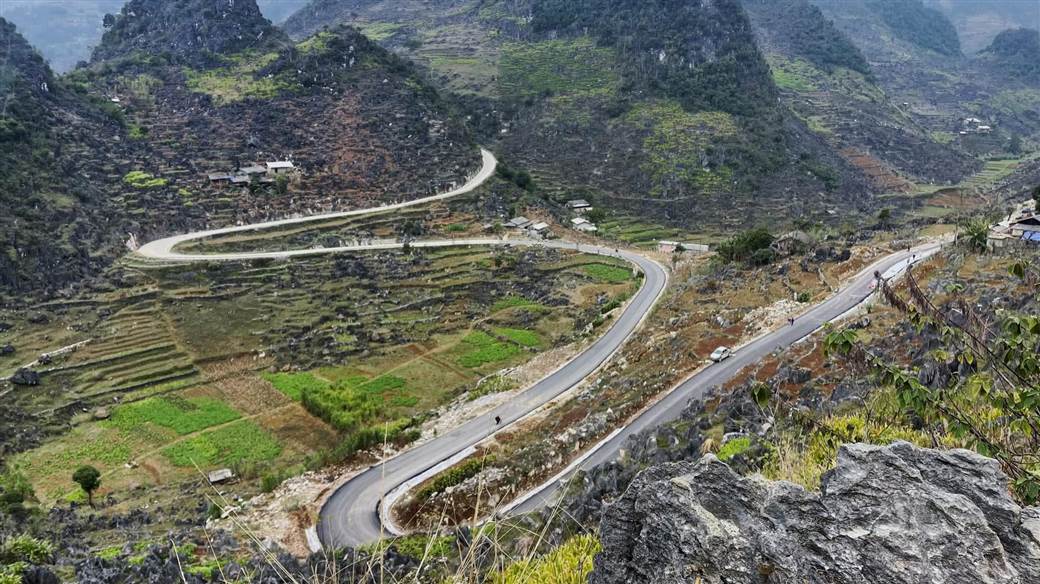
1.2 Most Dangerous Sections and When to Avoid
Ma Pi Leng Pass stands as the most challenging and potentially hazardous segment of the entire loop. This 20-kilometer stretch between Dong Van and Meo Vac features extremely narrow roads carved into nearly vertical cliff faces, with drops of several hundred meters into the Nho Que River below. The road surface itself varies in quality, with some sections poorly maintained. Strong crosswinds can catch riders unaware, particularly on wider vehicles or those carrying top-heavy luggage.
The roads connecting Quan Ba to Yen Minh also demand extreme caution, especially the steep hairpin turns descending from Heaven’s Gate viewpoint. Similarly, the stretch from Du Gia to Ha Giang features narrow mountain roads with limited visibility around curves. These sections become particularly treacherous during the rainy season (May to September), when landslides frequently block routes and create hazardous conditions.
Timing significantly impacts safety on all sections. Early morning fog typically blankets mountain passes until 9-10 AM, drastically reducing visibility. Afternoon thunderstorms roll in quickly between June and August, bringing sudden downpours that transform dry roads into slick surfaces. Night driving should be avoided entirely – the lack of street lighting, combined with the hazardous terrain and wildlife activity, creates extremely dangerous conditions after dark.
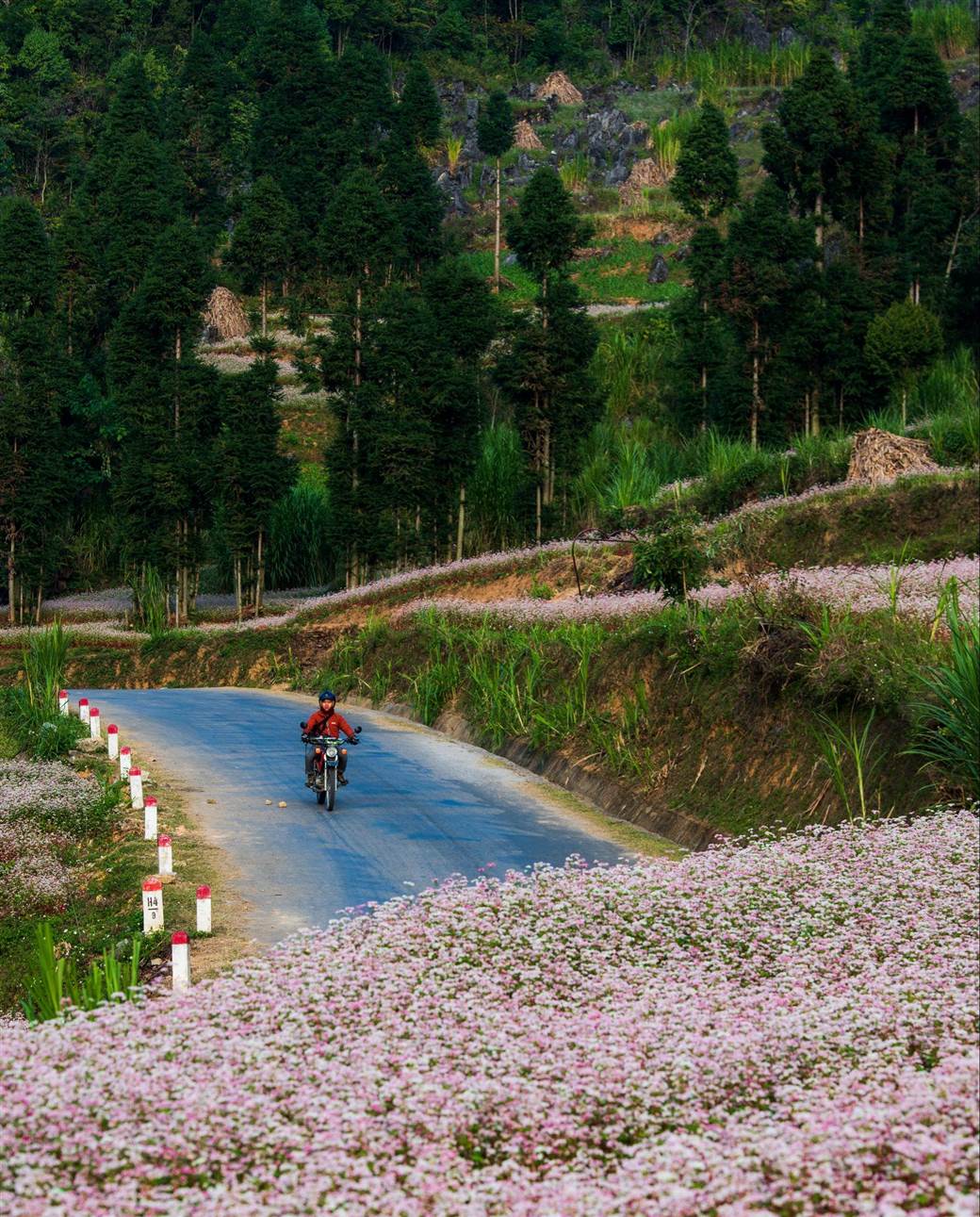
2. Essential Pre-Trip Preparations
Thorough preparation before embarking on the Ha Giang Loop can significantly reduce risks and ensure you’re equipped to handle unexpected situations. From legal requirements to equipment selection, these preparations form the foundation of a safe journey.
2.1 Legal Requirements for the Loop
Vietnam requires a valid motorcycle license to legally operate a motorbike, including on the Ha Giang Loop. International visitors must possess an International Driving Permit (IDP) alongside their home country’s license. Without proper documentation, you risk fines if stopped by police and, more importantly, may invalidate any travel insurance coverage for accidents or injuries.
Insurance represents another crucial legal consideration. Standard travel insurance policies often exclude motorcycle accidents, especially on vehicles over 50cc. Before departure, secure a policy that explicitly covers motorbike riding in Vietnam, with emergency evacuation coverage highly recommended given the remote nature of the region. Always carry physical copies of your documentation, including passport, visa, license, and insurance details, as digital versions may be inaccessible in areas without service.
A temporary residence permit is required when staying overnight in border areas like Dong Van and Lung Cu. While these are typically arranged by accommodation providers, confirm this service when booking to avoid complications. Police checkpoints occasionally appear throughout the loop, particularly near border zones, so having proper documentation readily available saves time and potential difficulties.
2.2 Choosing a Reliable Motorbike
Your choice of motorcycle can significantly impact both safety and enjoyment of the Ha Giang Loop. For first-timers, semi-automatic bikes like the Honda Wave or Yamaha Sirius offer a good balance of power and control. Their lightweight frames prove easier to manage on tight turns, while automatic transmissions let riders focus fully on navigation rather than gear changes. For experienced riders, manual bikes like the Honda XR150 provide better power for steeper sections but require greater skill to operate safely on challenging terrain.
Regardless of model, inspect any rental bike thoroughly before accepting it. Check tire tread depth and pressure, as worn tires lose traction on wet or gravelly surfaces. Test both front and rear brakes separately, ensuring they engage smoothly without grabbing suddenly. Verify that headlights, taillights, and turn signals function properly for visibility in fog or rain. Suspension should compress and rebound evenly when pressed, as compromised shocks reduce control on bumpy roads.
At Phieu Travel, we recommend renting from reputable providers who maintain their fleet properly, even if prices exceed budget options. Ask about roadside assistance policies and whether replacement vehicles are available if mechanical issues arise. Consider arranging your rental through established tour operators rather than informal street-side vendors, as quality control tends to be more consistent and transparent.
2.3 What to Pack for Safety
A well-planned packing strategy balances safety essentials with practical weight limitations. Start with documents: license, passport, insurance details, and emergency contacts should be stored in waterproof pouches accessible without removing backpacks. Carry sufficient cash, as ATMs exist only in larger towns, and most homestays and small restaurants don’t accept cards.
A comprehensive first-aid kit forms your first line of defense against minor injuries. Include antiseptic wipes, bandages in various sizes, gauze, medical tape, pain relievers, anti-diarrheal medication, and any personal prescriptions. Add a basic repair kit with zip ties, duct tape, a multitool, and a portable tire inflator for temporary fixes until you reach professional help.
Navigation tools remain essential despite smartphone mapping. Download offline maps through apps like Maps.me or Google Maps before departure, and consider a portable power bank to keep devices charged. A physical map serves as backup when electronics fail or batteries deplete. For communication in areas without cellular service, consider a satellite messenger device if traveling in particularly remote sections or during off-peak seasons when fewer fellow travelers might be available to help.
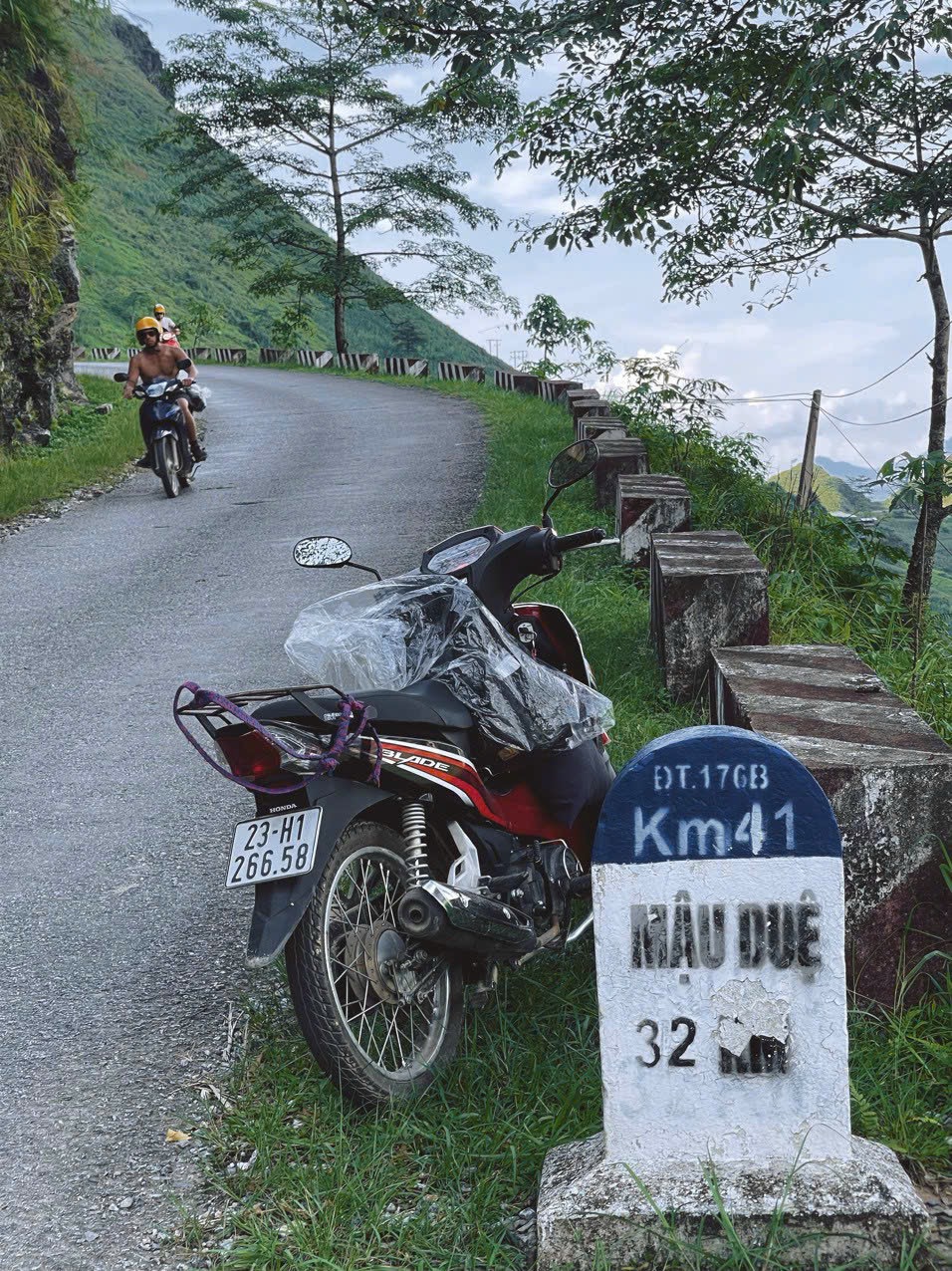
3. Must-Know Riding Safety Tips
Mastering specific riding techniques adapted to the unique challenges of mountain roads significantly reduces accident risks. These practical skills, when consistently applied, allow you to enjoy the spectacular views while maintaining control and awareness.
3.1 Defensive Riding Techniques for Mountain Roads
Defensive riding begins with positioning yourself properly on the road. In Vietnam, traffic moves on the right side, but on narrow mountain passes, staying in the middle of your lane provides maximum visibility around blind corners. Maintain extra distance from other vehicles, particularly on descents where stopping distances increase dramatically. Anticipate rather than react – scan continuously for potential hazards like oncoming traffic, animals, or debris.
Local driving customs require special attention. The horn serves as a communication tool rather than an expression of frustration; use short beeps when approaching blind corners to alert oncoming traffic. Similarly, respond to horns from approaching vehicles by moving slightly to your side of the road. Watch for hand signals from local drivers, who often indicate hazards ahead or safe passing opportunities.
Group dynamics demand additional caution. If riding with companions, maintain significant spacing between bikes, especially on descents or technical sections. Establish communication signals before departure, and agree on regular stopping points to regroup. Never feel pressured to ride beyond your comfort level to keep pace with more experienced riders – safety always takes precedence over schedules.
3.2 Speed, Braking, and Cornering
Speed management forms the cornerstone of safe mountain riding. The temptation to accelerate on straight sections must be balanced against the reality of unseen hazards around corners. A general rule suggests riding at speeds that allow you to stop within the visible road ahead. Reduce speed significantly before entering curves rather than braking within them, which can destabilize your motorcycle.
Proper braking technique becomes critical on the Loop’s varied surfaces. Apply both brakes simultaneously for maximum stopping power, with approximately 70% pressure on the front brake and 30% on the rear. On loose or wet surfaces, reduce front brake pressure to prevent skidding. Practice progressive braking – applying pressure gradually rather than grabbing suddenly – to maintain stability during stops.
Cornering requires special attention on mountain roads. The correct approach involves slowing before the turn, looking through the corner to your exit point, and maintaining steady throttle throughout. For right turns, position yourself on the left side of your lane before turning; for left turns, stay to the right. This technique, called “outside-inside-outside,” maximizes visibility and provides the smoothest, safest path through curves. Keep your body relaxed and avoid tensing your arms, which transfers unwanted input to the handlebars.
3.3 Driving in Adverse Weather
Weather conditions change rapidly in northern Vietnam, demanding adaptive riding strategies. When encountering rain, immediately reduce speed by at least 30% and increase following distances. Rain makes roads particularly treacherous during the first 30 minutes as water mixes with surface oils, creating extremely slippery conditions. If heavy rain reduces visibility significantly, find safe shelter rather than continuing – no schedule is worth the increased risk.
Fog presents another common challenge, particularly in early mornings and at higher elevations. When visibility decreases, reduce speed proportionally and activate your headlight, even during daylight hours. Avoid using high beams in fog, as they reflect off water particles and further reduce visibility. If fog becomes too dense to see adequate stopping distance ahead, pull completely off the road at a safe location and wait for conditions to improve.
Strong winds, particularly on exposed mountain ridges, can push motorcycles unexpectedly. Counter this by adopting a slightly wider stance on the footpegs for stability and by maintaining a firm but relaxed grip on the handlebars. In extreme wind conditions, particularly when gusts come from the side, it may be safer to pause your journey until conditions moderate rather than risk being blown toward cliff edges.
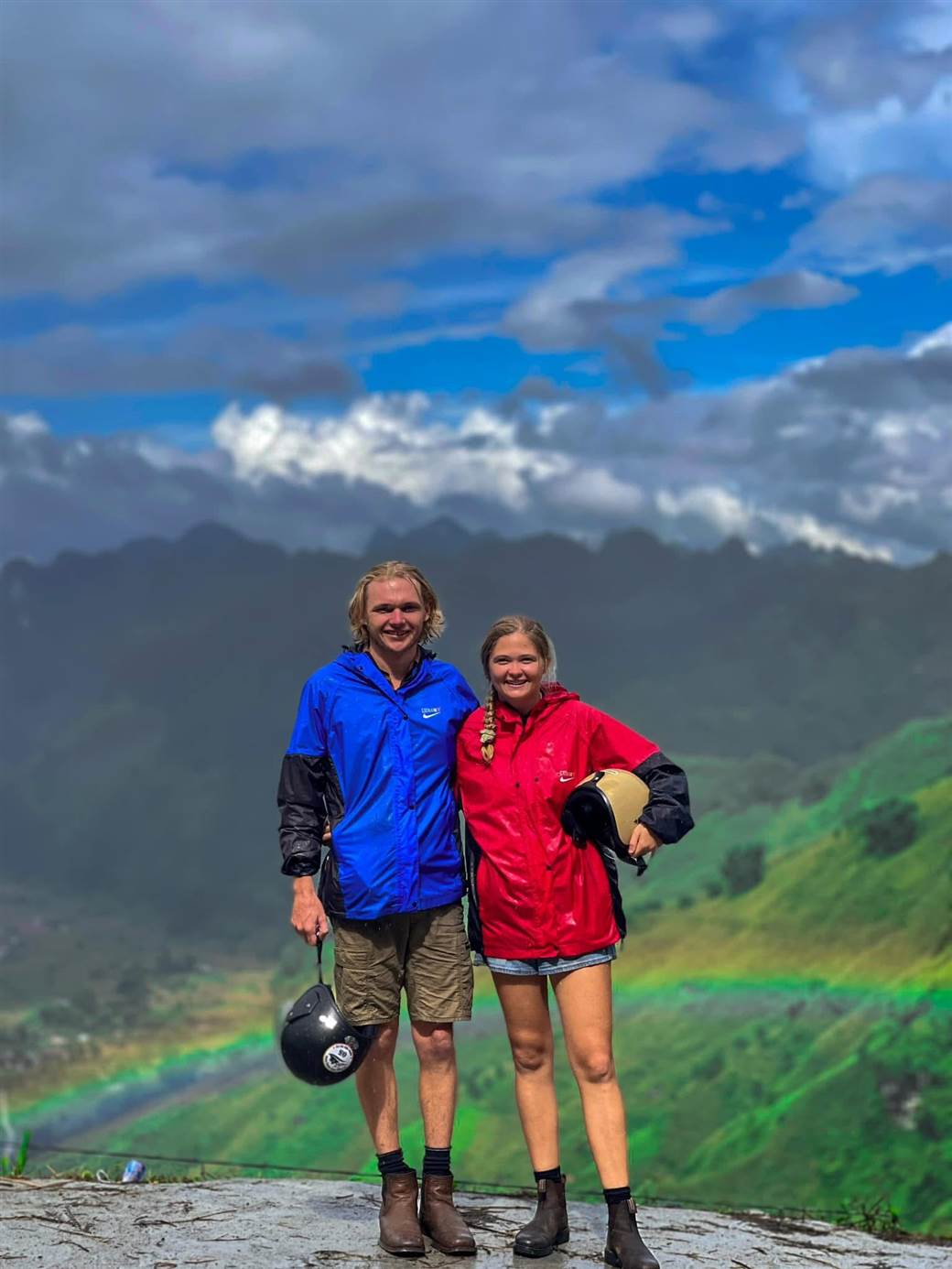
4. The Right Safety Gear
Appropriate protective equipment significantly reduces injury severity in the event of accidents. While comfort matters during long rides, never compromise safety for convenience, particularly in a region where medical assistance may be hours away.
4.1 Helmets and Body Armor
A high-quality, properly fitted helmet provides your most crucial protection. Full-face helmets offer superior safety by protecting your entire head, including face and jaw. Look for helmets meeting international safety standards like DOT, ECE, or SNELL. Ensure your helmet fits snugly without pressure points; it should not shift when you shake your head. Visors should be clean and scratch-free for optimal visibility, with clear visors preferred for riding in variable light conditions.
Body armor provides critical protection for vulnerable areas beyond your head. At minimum, wear a jacket with built-in or insertable armor at shoulders, elbows, and back. These areas frequently impact first during falls. Modern motorcycle jackets combine protection with ventilation, making them practical even in warmer weather. For maximum safety, consider additional protection like chest protectors or riding pants with knee and hip armor, especially if attempting more technical sections of the loop.
Remember that safety gear only works when worn consistently. The momentary discomfort of wearing full protection in humid conditions pales in comparison to the consequences of riding unprotected. At Phieu Travel, we advise travelers to wear complete safety gear regardless of what local riders might do – cultural practices reflect different risk assessments and healthcare access than what applies to visitors.
4.2 Weather-appropriate Clothing & Gloves
Vietnam’s northern mountains experience significant temperature variations, often changing dramatically within a single day’s ride. Layering provides the most versatile approach to comfort while maintaining protection. Start with moisture-wicking base layers that keep skin dry. Add insulating mid-layers during cooler months, particularly when riding at higher elevations like Dong Van Plateau. Finish with waterproof, windproof outer layers that can be easily added or removed as conditions change.
Gloves serve dual purposes: protection during falls and operational comfort in varying weather. Carry two pairs if possible – thicker, insulated gloves for morning chill and lighter, ventilated pairs for warmer afternoons. All gloves should offer reinforced palms and knuckle protection while maintaining adequate dexterity for operating controls. Waterproof gloves prove invaluable during sudden rain showers, as cold, wet hands significantly impair reaction time and control.
Footwear requires special consideration for the Ha Giang Loop. Choose boots that cover your ankles for protection during falls and provide reliable grip on potentially slippery footpegs. Waterproof boots prevent discomfort during water crossings or rain, while modest heel height helps maintain secure footing when stopped on uneven surfaces. Avoid casual shoes or sandals, which offer minimal protection and can easily slip off footpegs during technical riding sections.
4.3 Packing Light and Loading for Balance
How you pack significantly impacts motorcycle handling and stability. Keep total luggage weight below 10% of the combined weight of the motorcycle and rider. Distribute weight evenly between sides of the bike, placing heavier items lower and closer to the motorcycle’s center of gravity. Avoid top-heavy configurations that compromise stability, particularly during low-speed maneuvers on rough surfaces.
Secure all items properly to prevent shifting during transit. Bungee cords, cargo nets, and purpose-designed motorcycle luggage provide stable attachment points. Regularly check that loads remain properly balanced and secured, especially after rough road sections where vibration might loosen attachments. Never hang bags from handlebars or place items between yourself and the controls, as these interfere with emergency maneuvers.
Consider your physical comfort when packing. A properly fitted daypack worn by the rider proves superior to poorly balanced motorcycle luggage for shorter journeys. For multi-day trips, saddlebags or panniers mounted low on the motorcycle’s sides provide optimal weight distribution. If using a backpack while riding, ensure it’s designed for motorcycle use with sternum and waist straps to prevent shifting, and keep weight to an absolute minimum to reduce rider fatigue.
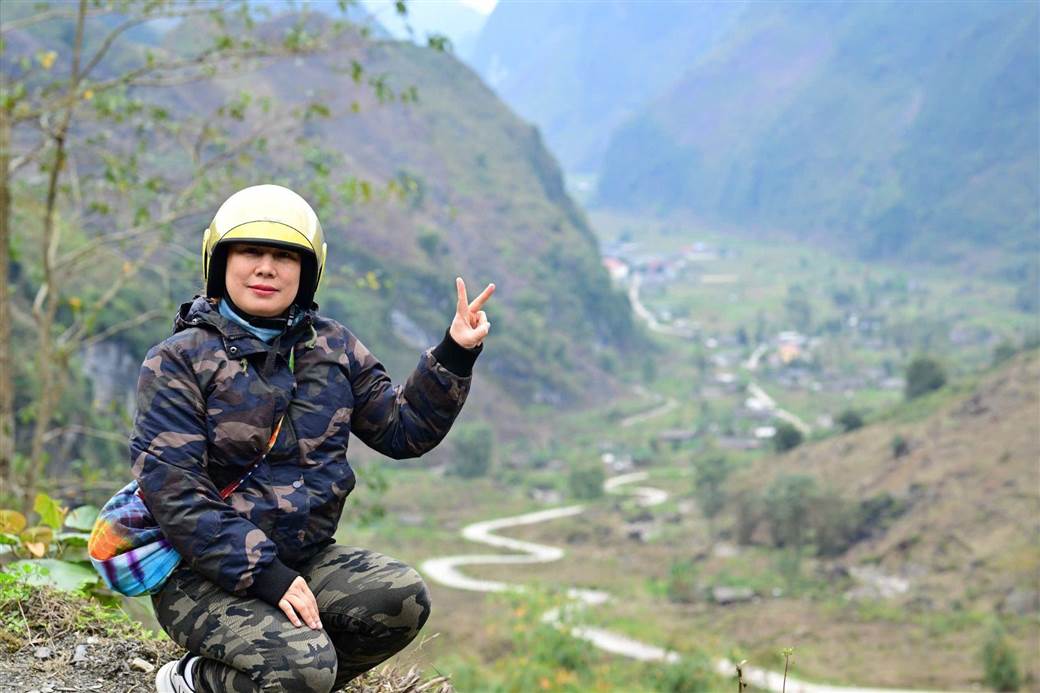
Ha Giang Motorbike Loop: The Ultimate Tour with Phieu Travel
5. What To Do in Emergencies
Even with thorough preparation and cautious riding, emergencies can occur. Knowing how to respond effectively can prevent minor incidents from becoming serious problems, particularly in remote areas of the Ha Giang Loop.
5.1 Accidents and First Aid
If you’re involved in an accident, first ensure your immediate safety by moving away from traffic if possible. Check yourself and others for injuries before moving vehicles. For minor incidents, exchange contact and insurance information with any other parties involved. In Vietnam, police reports are required for insurance claims, so contact local authorities at 113 (police) or 115 (ambulance) if available.
For injuries requiring first aid, begin by cleaning wounds thoroughly with antiseptic wipes to prevent infection. Control bleeding by applying direct pressure with clean gauze or cloth. Immobilize suspected fractures using improvised splints if necessary, avoiding movement of the injured area. Monitor for signs of shock – rapid breathing, confusion, clammy skin – and keep the person warm and lying down with legs elevated if these symptoms appear.
In serious emergencies where professional medical care is needed, decision-making becomes critical. In locations with cell service, call 115 for ambulance services, though response times vary significantly in remote areas. If evacuation becomes necessary and ambulances aren’t readily available, carefully assess whether private transportation might reach medical facilities faster. Major hospitals exist in Ha Giang City, but serious injuries may require transfer to Hanoi for advanced treatment.
5.2 Breakdown Protocols
Mechanical failures require systematic approaches, beginning with moving your motorcycle to a safe location off the road. Basic diagnostic steps include checking fuel levels, battery connections, and whether the engine overheated. Common roadside fixes include tightening loose connections, adjusting chains, or replacing fuses. For these situations, the basic tool kit mentioned earlier proves invaluable.
When repairs exceed your capabilities, local resources become essential. Small repair shops exist in most villages along the loop, with mechanics who can handle common issues despite potential language barriers. Keep a list of repair shop locations, particularly in remote sections like between Yen Minh and Dong Van. Take photos of specific mechanical problems to overcome communication challenges when explaining issues to local mechanics.
If a breakdown occurs in areas without nearby repair facilities, consider using passing vehicles for assistance. Local drivers often willingly transport stranded travelers to the nearest town. Alternatively, stay with your vehicle while sending a riding companion for help if traveling in groups. In extreme cases where no assistance is available, secure your belongings and prepare for potentially spending extra time at your location while awaiting help.
5.3 Communication and Navigation
Maintaining communication capabilities throughout the journey requires planning. Vietnam’s major providers (Viettel, Vinaphone, Mobifone) offer varying coverage along the loop, with Viettel generally providing the most reliable service in remote areas. Purchase SIM cards with sufficient data before leaving major centers, and download essential apps while still connected to reliable internet.
Navigation challenges arise when cellular coverage fails. Prepare by downloading offline maps through applications like Maps.me or Google Maps for the entire region before departure. Familiarize yourself with major landmarks and junction names, as these often serve as reference points when asking locals for directions. Physical maps provide reliable backups when digital options fail.
When completely lost or facing closed roads due to landslides or construction, local knowledge becomes invaluable. Basic Vietnamese phrases for asking directions prove helpful, though in tourist areas, young people often speak some English. Photographs of destinations on your phone can overcome language barriers when seeking assistance. Remember that in rural Vietnam, stopping at small shops or restaurants often connects you with locals willing to help once they understand your situation.
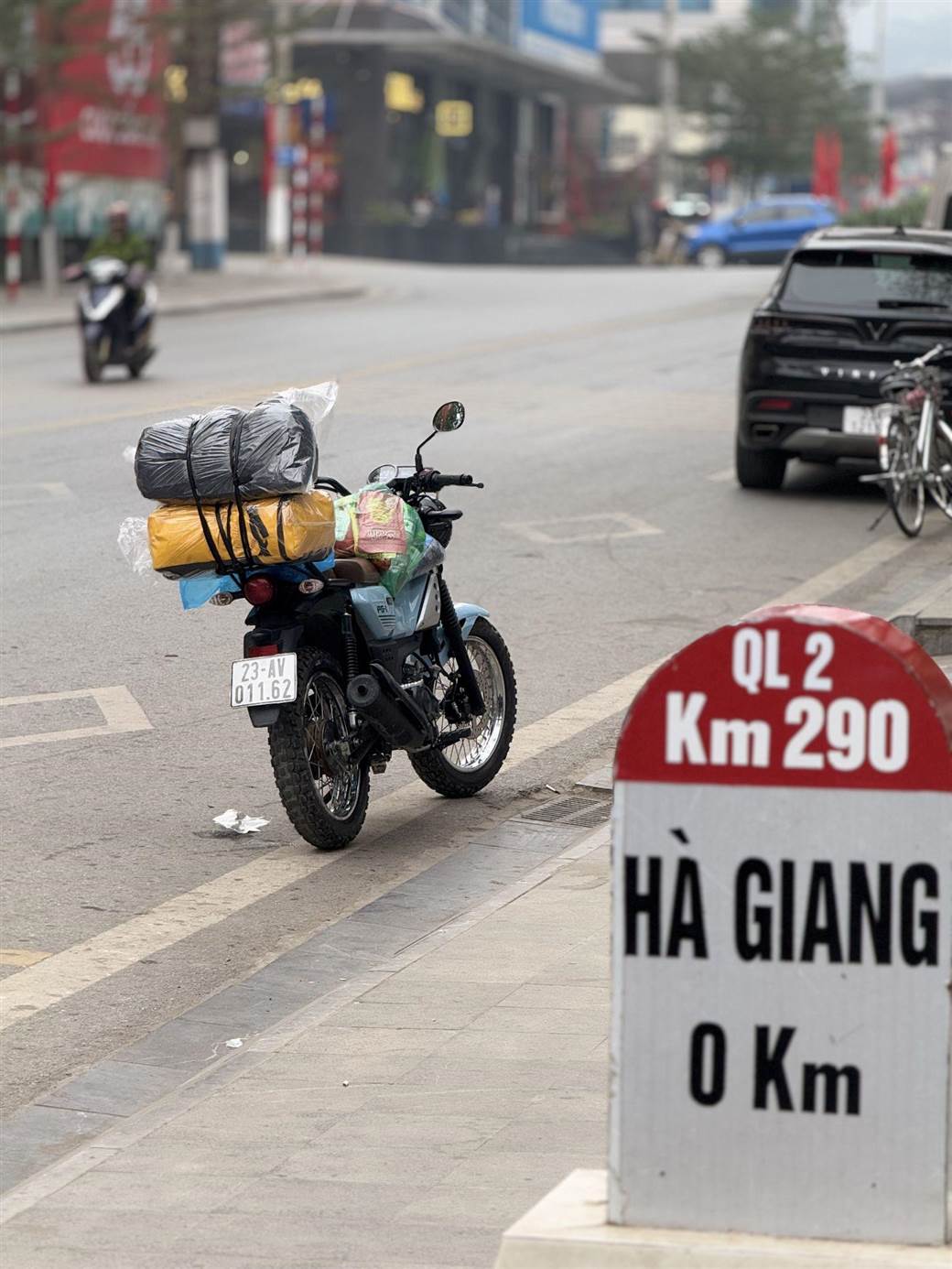
6. FAQs for Ha Giang Loop Riding
Travelers considering the Ha Giang Loop frequently share common concerns about safety and preparation. These answers address the most pressing questions based on actual experiences and local knowledge.
6.1 Is the loop safe for beginners?
The Ha Giang Loop presents significant challenges for novice riders. While technically possible for beginners, the combination of steep grades, sharp turns, and variable road conditions demands skills beyond basic riding abilities. First-time motorcyclists should not attempt self-riding the loop. However, riders with some experience – particularly those comfortable with challenging road conditions and confident in their ability to handle unexpected situations – can navigate the loop safely with proper preparation and caution.
For those with limited riding experience, several alternatives exist. Easy Riders – local guides who drive while you ride as a passenger – provide the safest option for experiencing the loop without personal riding risks. Small-group tours with experienced guides also offer added safety through knowledgeable route planning and mechanical support. Some travelers choose to build experience gradually by practicing on quieter roads around Ha Giang City before attempting the full loop.
6.2 Should I hire an Easy Rider or go solo?
This decision should reflect an honest assessment of your riding abilities, experience with similar terrain, and comfort navigating in unfamiliar environments. Easy Riders offer significant advantages: intimate knowledge of road conditions, language assistance, cultural insights, and mechanical expertise. They typically charge $25-45 per day including accommodation arrangements, making them cost-effective for solo travelers concerned about safety.
Self-riding provides greater freedom and personal challenge but requires confidence in your abilities and thorough preparation. If choosing this option, consider joining a guided self-riding tour where you control your own motorcycle while following an experienced leader. This middle-ground approach provides independence while benefiting from guide support for navigation, mechanical issues, and emergency situations.
At Phieu Travel, we recommend Easy Riders for anyone with less than two years of regular riding experience or those uncomfortable with mountain driving in their home countries. The increased safety and reduced stress allow greater appreciation of the stunning landscapes and cultural experiences that make the Ha Giang Loop extraordinary.
6.3 When is the best time to ride?
The optimal seasons for safety are late September through November and March through April. These periods typically feature dry roads, moderate temperatures, and clear visibility – all crucial factors for safe riding. October and November offer the added beauty of harvest season, with golden rice terraces and comfortable daytime temperatures between 15-25°C (59-77°F), though mornings and evenings require warm layers.
Avoid the summer rainy season (May through August) if possible, when daily downpours create hazardous conditions including reduced visibility, slippery surfaces, and increased landslide risks. December through February brings dry roads but cold temperatures, particularly at higher elevations where morning frost can create unexpectedly slippery conditions. If traveling during these months, later morning departures allow roads to warm, while proper cold-weather gear becomes essential.
Beyond weather considerations, timing relative to Vietnamese holidays affects traffic conditions. Avoid major holidays like Tet (Lunar New Year, typically in January or February), when roads become congested with local travelers and many businesses close. Weekends year-round see increased domestic tourism, particularly at popular viewpoints like Ma Pi Leng Pass, making weekday travel preferable for both safety and experience quality.
6.4 How do I handle accidents, police, or breakdowns?
In accident situations, first ensure everyone’s safety and address any injuries. Exchange information with other parties involved, including taking photos of identification documents, vehicle registration, and damage. Contact police at 113 for official reports needed for insurance claims. Keep emergency numbers accessible, including your country’s embassy or consulate (U.S. Embassy: +84-24-3850-5000) for serious situations.
Police interactions generally remain straightforward when documentation is in order. If stopped, present your license, passport, and vehicle registration calmly and respectfully. Officers may check international driving permits and temporary residence registrations in border areas. While official fines require written tickets, unofficial requests for immediate cash payment sometimes occur. Having proper documentation significantly reduces these situations.
For breakdowns, basic Vietnamese phrases help when seeking assistance. “Xe máy hỏng” (my motorbike is broken) and “Có thể sửa xe không?” (Can you fix the motorbike?) open communication with local mechanics. Save emergency contacts including your rental provider and accommodation owners, who often assist with translation during mechanical emergencies. Remember that in rural Vietnam, community assistance remains a cultural value – locals frequently help stranded travelers even without shared language.
6.5 What’s the key etiquette with locals and other riders?
Respectful interaction with local communities enhances both safety and cultural experience. When passing through villages, reduce speed significantly to minimize dust, noise, and risk to children or animals. Ask permission before photographing people, particularly in ethnic minority communities where cultural sensitivities may exist. Simple Vietnamese greetings like “Xin chào” (hello) and “Cảm ơn” (thank you) demonstrate respect and often receive warm responses.
On the road, maintain courteous relationships with other riders through predictable behavior. Use your horn sparingly but effectively before blind corners, maintaining the local custom of short, informative honks rather than expressions of frustration. When stopping at viewpoints, park motorcycles efficiently to allow space for others. Share road condition information with fellow travelers you meet, as recent landslides or construction may not appear on maps.
At homestays and local establishments, observe host customs regarding shoes (typically removed indoors) and mealtime etiquette. Most hosts appreciate guests trying local specialties, though dietary restrictions are increasingly understood in tourist areas. Small gifts from your home country often receive warm appreciation, though they’re never expected. These cultural courtesies not only enrich your experience but also continue building positive relationships between local communities and international visitors.
The Ha Giang Loop offers one of Vietnam’s most rewarding adventures, combining breathtaking landscapes with authentic cultural immersion. By approaching this journey with proper preparation, appropriate gear, and respect for local conditions, you transform potential risks into manageable considerations. At Phieu Travel, we believe that responsible tourism includes prioritizing safety alongside experience, creating memories that remain positive long after your return.
Whether you choose a guided expedition with an Easy Rider or navigate independently, these Ha Giang Loop safety tips provide the foundation for an unforgettable journey. Our team at Phieutravel.com remains committed to supporting travelers with current information, reliable services, and authentic experiences throughout northern Vietnam’s spectacular highlands. Adventure awaits on the winding roads of Ha Giang approach it with respect, preparation, and an open heart.
Read more:
- The Ultimate Guide to the M-Shaped Curve on Ha Giang Loop
- Beyond the Beaten Path: Discovering Ha Giang Province in Northeast Vietnam
- Vi Xuyen District, Ha Giang: Complete guide to Vietnam’s historic frontier

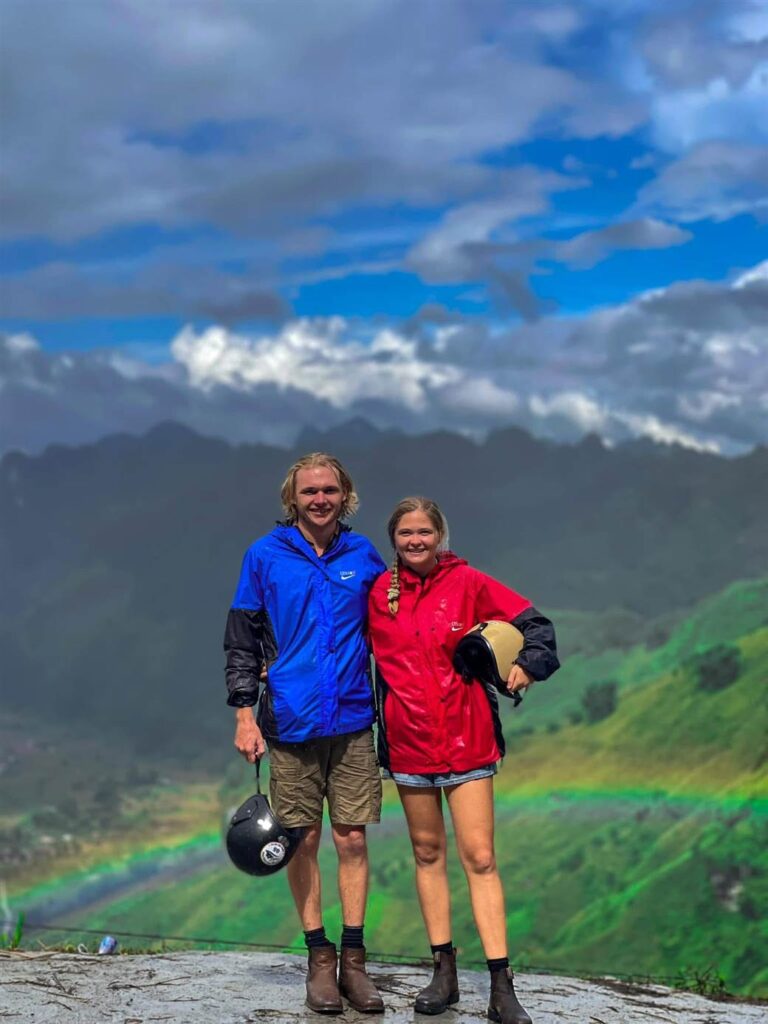
You Might Also Like
Ha Giang Weather in September: Complete Guide for Travelers
Exploring the magnificent Ha Giang Loop in September offers travelers a perfect balance of favorable[...]
Quan Ba Twin Mountains: Ha Giang’s Iconic Fairy Hills and Complete Travel Guide
The mystical Quan Ba Twin Mountains rise from the emerald valleys of Ha Giang like[...]
Vuong family mansion: the architectural marvel and cultural legacy of Ha Giang
Deep in Vietnam’s northern highlands, where mist-shrouded mountains meet terraced rice fields, stands a testament[...]
Ha Giang Loop Safety Tips: How to Ride Securely in Vietnam’s Northern Mountains
The Ha Giang Loop, with its winding mountain roads and breathtaking landscapes, offers one of[...]
The Ultimate Guide to the M-Shaped Curve on Ha Giang Loop
Vietnam’s remote northern province of Ha Giang hides a natural wonder that has captivated adventurous[...]
Most Beautiful Places to Visit in Vietnam: Essential Destinations and Insider Tips
Vietnam captivates travelers with its stunning landscapes, rich cultural heritage, and warm hospitality. From mist-shrouded[...]
Beyond the Beaten Path: Discovering Ha Giang Province in Northeast Vietnam
Ha Giang Province in Northeast Vietnam stands as one of the country’s last frontiers for[...]
Rainy season in Ha Giang: what to expect, when to go, and travel tips
Vietnam’s northern frontier reveals a different face during the rainy season, transforming Ha Giang’s limestone[...]